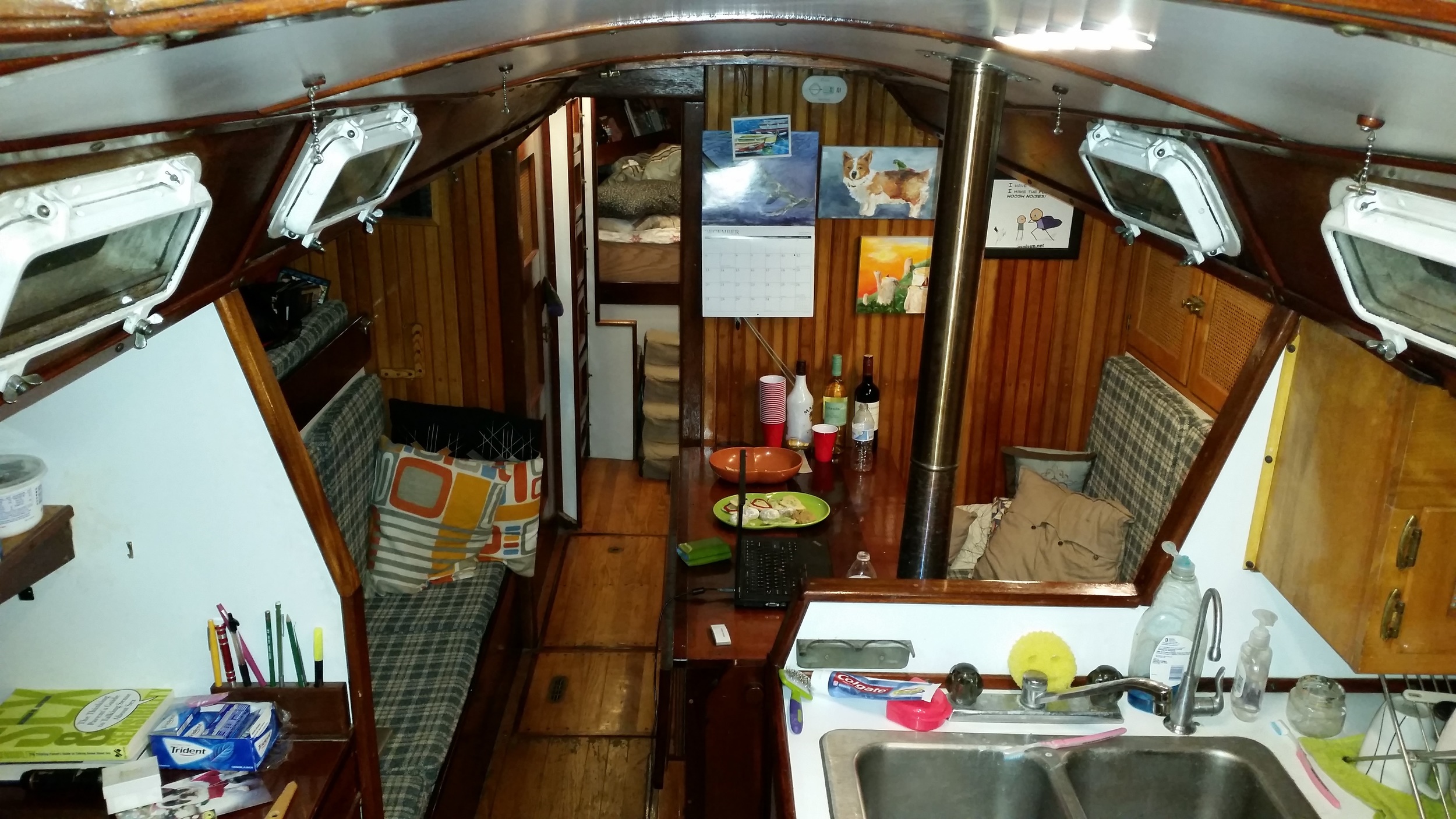While I used to maintain the idea that Wisdom is a Sailboat that we live in, it is important to make sure that your comforts are met.
The beds should be soft and you should surround yourself with what makes you comfortable. When Maddie moved in, she brought along her collection of stuffed animals.
I am strongly against the idea of "collecting" because all I hear is "holding on to a bunch of stuff for no reason". She did only bring her favorites to the boat, but over the past year, a few new ones have been bought and added to the boat.
Before Maddie, the possibility of having a collection aboard would have been non-existent. But Maddie has made me see that there are things whose sole purpose is to make the space you live in a home.
I now maintain the idea that Wisdom is a sailboat and our home.
No matter how small the space is that you call home, make it comfortable and make it yours!











